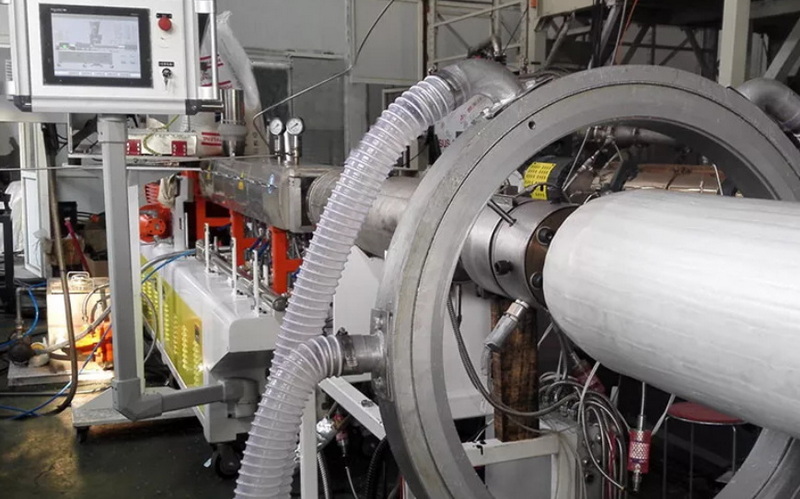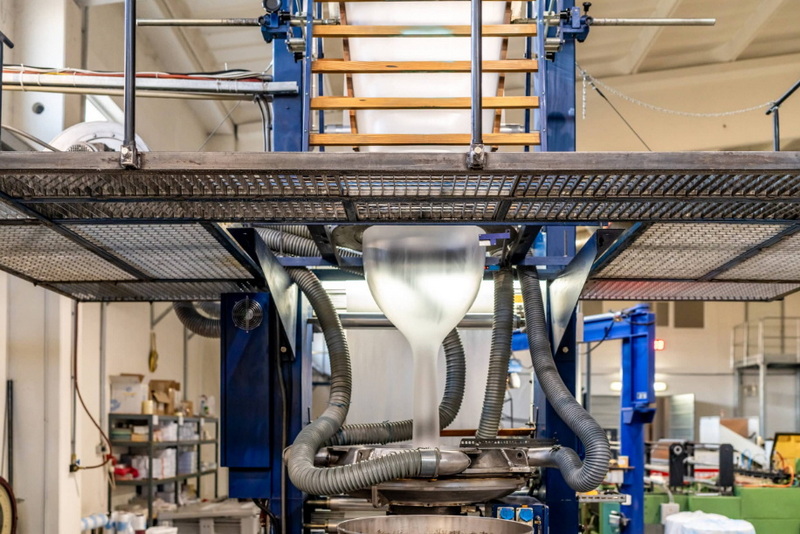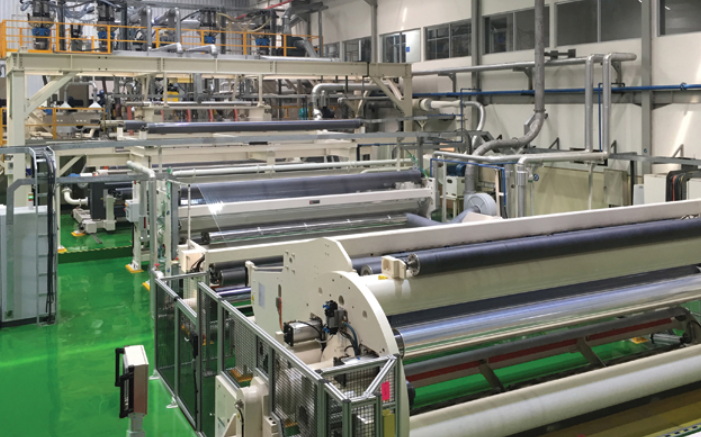Content Menu
● Understanding Foam Extrusion Machinery
>> Key Components of Foam Extrusion Machinery
● Factors to Consider When Choosing Foam Extrusion Machinery
>> 1. Production Capacity
>> 2. Material Compatibility
>> 3. Foam Density and Thickness
>> 4. Automation Features
>> 5. Energy Efficiency
>> 6. Maintenance Requirements
>> 7. Customization Options
>> 8. After-Sales Support
● Types of Foam Extrusion Machinery
>> 1. PE Foam Extrusion Machines
>> 2. PP Foam Extrusion Machines
>> 3. PS Profile Extrusion Machines
>> 4. XPS Foam Extrusion Lines
>> 5. Laboratory Foam Extrusion Systems
● Latest Innovations in Foam Extrusion Technology
>> 1. Twin-Screw Extruders with Direct Gassing
>> 2. Enhanced Cooling Systems
>> 3. Advanced Automation Features
>> 4. Sustainable Materials and Processes
● Common Challenges in Foam Extrusion
● Tips for Selecting the Best Machine
● Conclusion
● FAQs
>> 1. What are the common defects in foam extrusion?
>> 2. How does automation improve foam extrusion processes?
>> 3. What types of foam can be produced using extrusion machinery?
>> 4. What is the difference between single-screw and twin-screw extruders?
>> 5. How do you maintain foam extrusion machinery?
● Citations:
Selecting the right foam extrusion machinery is a pivotal decision for manufacturers aiming to achieve efficiency, high-quality output, and cost-effectiveness. Foam extrusion machines are widely used across industries such as packaging, construction, automotive, and furniture. This article will guide you through the essential factors to consider when choosing foam extrusion machinery, the types of machines available, and the latest advancements in this field.

Understanding Foam Extrusion Machinery
Foam extrusion machinery plays a central role in producing lightweight and durable foam products by processing raw polymers like polyethylene (PE), polypropylene (PP), or polystyrene (PS). These machines create foam products by introducing gases or chemical foaming agents into molten polymers during extrusion.
Key Components of Foam Extrusion Machinery
1. Extruder: Melts and mixes raw materials.
2. Foaming Agent System: Introduces gases or chemical agents to create cellular structures.
3. Die Head: Shapes the foam product.
4. Cooling System: Solidifies the foam structure after extrusion.
5. Cutting and Stacking Units: Finalizes the shape and dimensions of the product.
Factors to Consider When Choosing Foam Extrusion Machinery
1. Production Capacity
Your production requirements dictate the type of machine you need. High-output machines are suitable for large-scale operations, while smaller units work well for niche applications.
2. Material Compatibility
Ensure that the machine is compatible with your chosen raw materials (e.g., PE, PP, PS) and can handle additives or fillers if required.
3. Foam Density and Thickness
Different applications require specific density and thickness levels. Choose a machine that allows for precise adjustments to meet your specifications.
4. Automation Features
Modern foam extrusion machines often feature advanced automation technologies such as PLC controls, remote monitoring, and data visualization systems, which improve precision and reduce human error.
5. Energy Efficiency
Energy-efficient machines can significantly lower operational costs by reducing power consumption without compromising productivity.
6. Maintenance Requirements
Opt for machinery that is easy to operate and maintain to minimize downtime and extend its lifespan.
7. Customization Options
Machines with customizable features allow manufacturers to adjust foam properties like density, width, or shape to cater to diverse industry needs.
8. After-Sales Support
Choose a manufacturer with strong after-sales support, including training, maintenance services, and readily available spare parts.
Types of Foam Extrusion Machinery
1. PE Foam Extrusion Machines
These machines produce lightweight PE foam sheets used in packaging, insulation, and cushioning applications.
2. PP Foam Extrusion Machines
PP foam is known for its durability and thermal resistance, making these machines ideal for automotive interiors and food packaging applications.
3. PS Profile Extrusion Machines
Used for decorative mouldings like picture frames or interior design elements.
4. XPS Foam Extrusion Lines
Extruded polystyrene (XPS) foam is widely used in construction for thermal insulation due to its high compressive strength.
5. Laboratory Foam Extrusion Systems
Laboratory systems are designed for small-scale production or testing purposes. They help manufacturers develop new formulations or test materials before scaling up production.

Latest Innovations in Foam Extrusion Technology
Advancements in foam extrusion technology have revolutionized manufacturing processes by improving efficiency, quality control, and sustainability.
1. Twin-Screw Extruders with Direct Gassing
Modern twin-screw extruders allow direct injection of gases like CO2 or N2 into the polymer melt, resulting in better control over foam density and cell structure[1][4].
2. Enhanced Cooling Systems
Innovative cooling systems improve temperature control during extrusion, ensuring uniformity in foam products while reducing energy consumption[6].
3. Advanced Automation Features
Industry 4.0 technologies enable real-time monitoring of parameters such as melt pressure, temperature, and gas injection rates[5]. These systems enhance precision while minimizing waste.
4. Sustainable Materials and Processes
New technologies support the use of recycled polymers and eco-friendly blowing agents like CO2 to reduce environmental impact[2][6].
Common Challenges in Foam Extrusion
Despite technological advancements, manufacturers face several challenges during foam extrusion:
1. Uneven thickness or density due to improper mixing.
2. Overheating during mixing can lead to excessive gas expansion, affecting product geometry[4].
3. Variations in cooling can cause warping or inconsistent cell structures.
4. Equipment limitations may hinder the production of complex profiles with tight tolerances.
To overcome these challenges:
- Regularly calibrate equipment.
- Use high-quality raw materials.
- Ensure proper maintenance of extruder components like screws and dies[6].
Tips for Selecting the Best Machine
1. Match the machine's capabilities with your production requirements.
2. Prioritize energy-efficient models to reduce costs.
3. Opt for advanced automation features for better control.
4. Request demonstrations or trial runs before purchasing.
5. Choose a reliable manufacturer with strong after-sales support.
Conclusion
Choosing the best foam extrusion machinery requires careful evaluation of production needs, technical specifications, and industry requirements. By considering factors such as capacity, material compatibility, energy efficiency, and automation features, manufacturers can optimize their operations while maintaining high-quality standards.

FAQs
1. What are the common defects in foam extrusion?
Defects include uneven thickness, bubbles on the surface, warping due to insufficient cooling, or rough surfaces caused by unmelted particles[4]. These issues can often be resolved by adjusting temperature settings or cleaning components like screens and screws.
2. How does automation improve foam extrusion processes?
Automation reduces human error, enhances precision in controlling parameters like temperature and pressure, and increases overall efficiency through features like PLC systems or remote monitoring[5].
3. What types of foam can be produced using extrusion machinery?
Foam extrusion machinery can produce PE foam sheets, PP foams for automotive parts, PS profiles for decorative mouldings, XPS insulation boards, XPET boards for thermal insulation applications, and more depending on the machine type[6].
4. What is the difference between single-screw and twin-screw extruders?
Twin-screw extruders offer better mixing capabilities compared to single-screw extruders[1]. They are ideal for complex applications requiring precise control over density reduction.
5. How do you maintain foam extrusion machinery?
Regular maintenance includes cleaning screens and screws, calibrating temperature controls, inspecting cooling systems, and ensuring proper lubrication of moving parts to prevent wear and tear[6].
Citations:
[1] https://www.sulzer.com/-/media/files/products/separation-technology/brochures/english/sulzer_aixfotec_twin_screw_extrusion_e10734_en_web.pdf
[2] https://www.ptonline.com/news/new-pp-foam-extrusion-technology
[3] https://www.supergas.com/for-industrial/case-studies/foam-extrusion
[4] https://www.extrusionconsultinginc.com/quality-issues-in-foam-extrusion.html
[5] https://www.plasticsmachinerymanufacturing.com/extrusion/article/21161172/oems-forecast-high-tech-future-for-extrusion
[6] https://www.useon.com/guide/how-to-rise-to-the-challenge-for-foam-extrusion/
[7] https://www.moldingmachinetepai.com/news/what-are-the-latest-innovations-in-epe-foam-sheet-extrusion-line-technology.html
[8] http://www.ynbenxing.com/en/TechnicalService/10
[9] https://www.tecnaplastics.com/2024/03/06/fap-anticipating-future-trends-in-foam-industry/
[10] https://static.prod01.ue1.p.pcomm.net/smeng/user_content/forums/topics/files/1445/762556b9706c09bbd2377f74aa65ec30-fundamentals-of-foam-sheet-extrusion-using-a-tandem-extrusion-line.pdf
[11] https://alemo.eu/news/
[12] https://www.supergas.com/for-industrial/case-studies/foam-extrusion-application
[13] https://www.linkedin.com/pulse/common-problems-solutions-production-process-pvc-foam-alex-lee
[14] https://www.linkedin.com/pulse/global-foam-extrusion-system-market-forecast-zjh4e/
[15] https://www.lernermoldedplastics.com/the-comprehensive-guide-to-advanced-extrusion-techniques/
[16] https://www.useon.com/foam-extrusion/
[17] https://onlinelibrary.wiley.com/doi/full/10.1002/app.55693
[18] https://www.jwellmachine.com/common-problems-and-solutions-in-the-production-of-pvc-foam-board/
[19] https://packagingspeaksgreen.com/en/technologies/major-advances-foam-extrusion
[20] https://www.bio-conferences.org/articles/bioconf/full_html/2018/01/bioconf_wipie2018_01004/bioconf_wipie2018_01004.html













